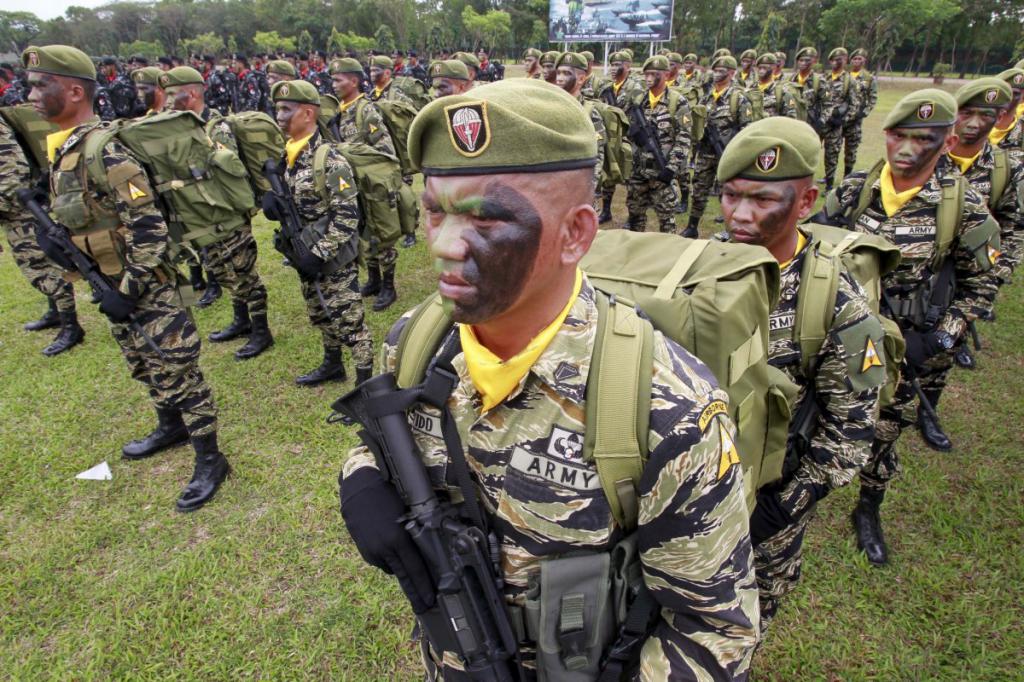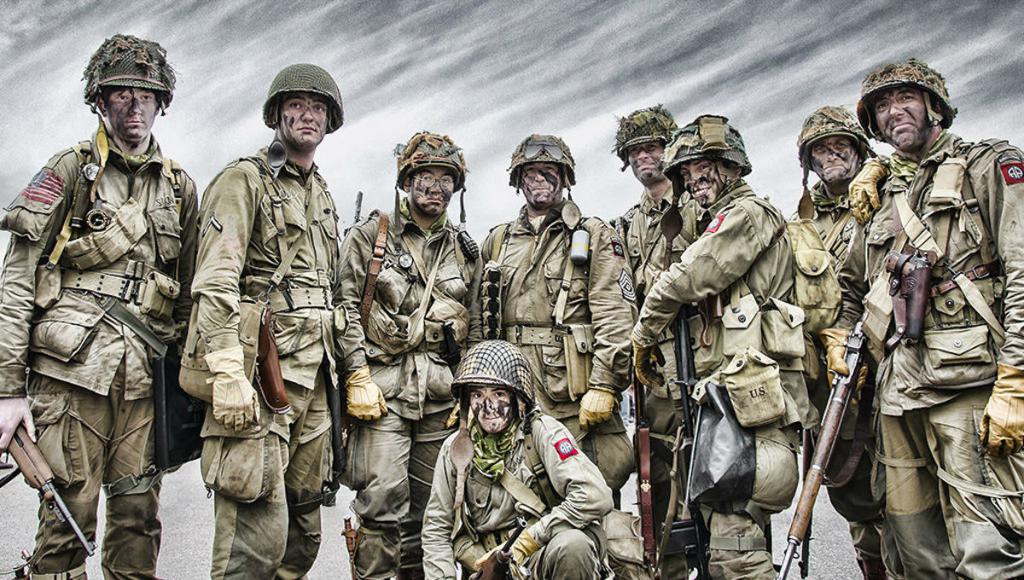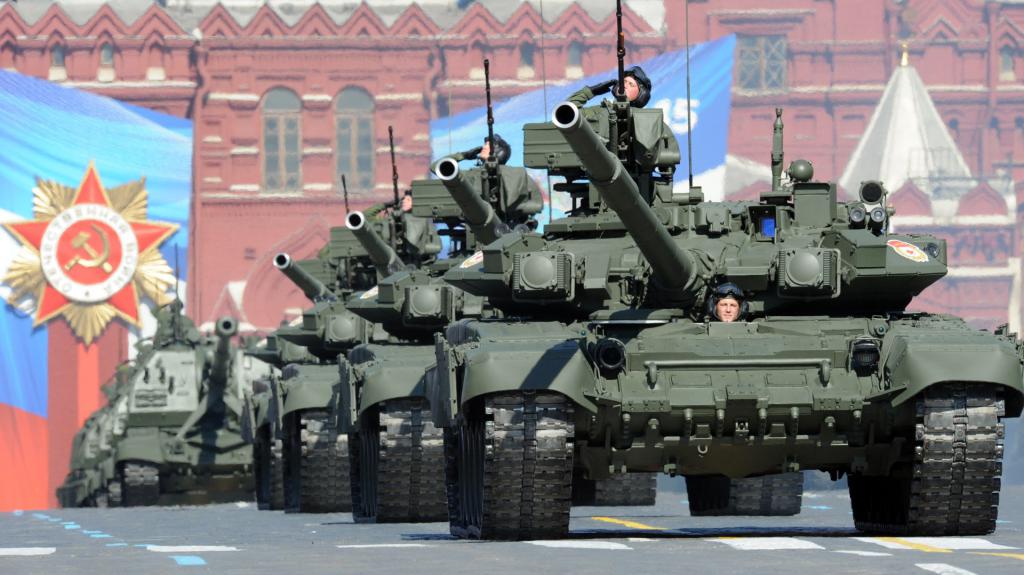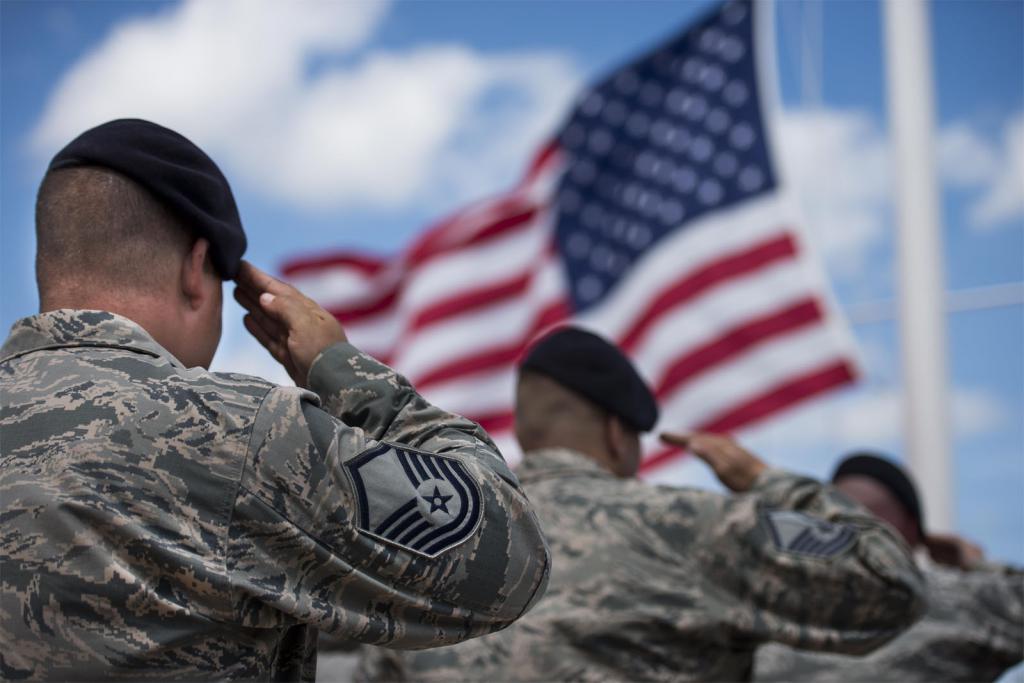It has always been difficult for generals to manage large military units. To facilitate management, it was decided to create subunits commanded by junior commanders. The following is a list of these subunits. Of course, each army has its own way of controlling, but subunits are often similar in different armies. After all, the management of military units of the army is an extremely responsible matter, and the smaller the unit that the officer commands, the easier it is to understand the situation. This reduces liability.
This article will also consider the organization and armament of units of foreign armies. This is a very serious topic that many people are interested in. Large units of foreign armies are divided into small parts. The first such part is the link.
Link or fire group
The link is a small military subsection of infantry and is designed to optimize fire, movement, and tactical doctrine in battle. Depending on the requirements of the mission, a typical fire group consists of four or less members:
- submachine gunner;
- assistant submachine gunner;
- shooter;
- appointed team leader.
The role of each leader of fire groups is to ensure that everyone acts as a whole. Two or three firing groups are organized into a detachment or section in coordinated operations led by a detachment commander.
Military theorists consider effective fire groups to be extremely important for today's professional military, as they serve as the main group. Psychological research conducted by the United States Army showed that the survivability and preparedness of soldiers for battle is more influenced by the desire to both protect and support other members of the fire group than abstract concepts or ideologies. Historically, countries with effective organization of fire groups had significantly better performance from their infantry units in battle than those that were limited to traditional operations: with larger units.

The fire group is the primary link on which the organization of modern infantry in the British Army, the Royal Air Force regiments, the Royal Marines, the US Army are based. The concept of fire groups is based on the need for tactical flexibility in infantry operations. A link is able to act autonomously as part of a larger block. Successful work in the composition of the fire groups depends on the quality of training of the military personnel of small units, the experience of the joint work of the members of the fire groups, the availability of sufficient communications infrastructure and a good sergeant to ensure tactical leadership of the group.
These requirements have led to the successful use of the concept of fire groups by more professional military personnel. Calling up for military service makes it difficult to develop links because team members are less effective as they gain experience over time, working together and building personal ties. The tactics of the actions of army units as part of the unit are quite diverse.
In combat, when attacking or maneuvering, the firing group usually extends to a distance of 50 meters (160 feet), while in defensive positions the team can cover the range of their weapons or visibility, whichever is less. In open areas, an effective group can travel up to 500 meters (1600 feet), although the detection range limits effectiveness beyond 100 meters (330 feet) or so without special equipment.A team is effective as long as its primary weapon remains operational. The unit as part of an army unit is currently a very effective combat unit.
The next unit consists of several links. This large army unit is called a detachment.
Detachment
In military terminology, a detachment, or squadron, is a unit led by a non-commissioned officer who reports to an infantry platoon. In countries that adhere to the traditions of the British Army (Australian Army, Canadian Army, etc.), this organization is called a section. In most armies, a detachment consists of eight to fourteen soldiers and can be divided into fire groups.
During World War II, an infantry detachment of the German Wehrmacht (or Gruppe) was built around a general-purpose machine gun. The advantage of the concept of a general-purpose machine gun was that it significantly increased the total amount of fire that could be given by the detachment. MG-34 or MG-42 were actively used in the role of such a machine gun.
The infantry group consisted of ten people: a non-commissioned officer, deputy commander, a group of three people (machine gunner, assistant gunner and ammunition carrier) and five shooters. As a personal small arms, the detachment commander was given a rifle or, since about 1941, a submachine gun, machine gunners and his assistant were given pistols, and the deputy commander, ammunition carrier and shooters - rifles.
Arrows carried additional ammunition, hand grenades, explosives, or a machine-gun tripod, as needed. They provided security and covering fire for the machine gun group. Two of the standard Karabine 98k rifles of the standard release could be replaced with Gewehr-43 semi-automatic rifles, and sometimes the StG-44 assault rifles could be used to rearm the entire squad except for the machine gun.
In units of the US Army historically, the unit was a unit of the section, consisting of two soldiers up to 12 people, and was originally used mainly for training and administrative purposes.
Platoon
A platoon is a combat unit of an army, usually consisting of two or more units / sections / patrols. The platoon organization varies from country to country, but as a rule, according to the official tables of the organization published in the US military documents, the entire US infantry platoon consists of 39 soldiers or 43 marines (US Army or US Marine Corps, respectively) . There are other types of infantry platoons (for example, anti-tank, lightly armored reconnaissance, mortar, reconnaissance, sniper), depending on the service and type of infantry company / battalion to which the platoon is assigned, and these platoons can range from 18 people (marine corps USA - sniper platoon) up to 69 people (USCM - mortar platoon).

The platoon was originally a firing squad, not an organization. The system was invented by Swedish Gustav Adolf in 1618. In the French army in the 1670s, the battalion was divided into 18 platoons, which were grouped into three "firing". Each platoon in shooting either actually fired or reloaded. The system was also used in the British, Austrian, Russian and Dutch armies. The platoon commander is usually a junior officer: junior or senior lieutenant or soldier of equivalent rank. The officer is usually assisted by a platoon sergeant. A platoon is usually the smallest military unit led by an officer.
Rifle platoons usually consist of a small platoon and three or four sections (commonwealths) or squadrons (USA). In some armies, a platoon is used in all army units. In several armies, such as the French army, the platoon is specifically a cavalry unit, and the infantry uses a "section" as an equivalent unit.A unit consisting of several platoons is called a company / battery / squad.
Since October 1913, according to the scheme of General Sir Ivor Max, regular battalions of the British army were reorganized from the previous eight companies into four company structures, each company having four platoons as separate units, each of which was commanded by a lieutenant with a platoon sergeant as his deputy. Each platoon was divided into four parts under the command of a corporal. Due to the lack of officers in 1938-1940. For experienced non-commissioned officers in command of platoons, the non-commissioned officer rank of sergeant major of the platoon was introduced. In modern units of the Russian army, a platoon is one of the main army units.
Company
A company is a military unit, usually consisting of 80-150 soldiers, commanded by a major or captain. Most companies are made up of three to six platoons, although the exact number may vary by country, type of unit, and structure.

Typically, several companies are grouped into a battalion or regiment, the last of which is sometimes formed by several battalions. Sometimes, for special purposes, independent or separate companies are organized, such as the 1st Air Force Communications Company or the 3rd Reconnaissance Company. These companies are not organic for a battalion or regiment, but rather are directly subordinate to a higher-level organization, such as the headquarters of naval expeditionary forces (i.e., corps level command).
Companies in the units of the Russian army:
- Motorized Rifle Company. The Soviet motorized rifle company can be mounted with any armored personnel carrier, armored personnel carrier or infantry fighting vehicle, which were more numerous in the late 1980s. The armored personnel carrier of the rifle company consisted of the company headquarters, three motorized rifle platoons and a machine-gun / anti-tank platoon. A rifle company with infantry fighting vehicles had the same number of personnel and carriers, and consisted of a company headquarters, three motorized rifle platoons and a machine-gun platoon equipped with six RPK-74. Despite the seemingly lower firepower, American commanders were encouraged to include heavier BMP weapons in their calculations.
- Tank company. Until the late 1980s, the Soviet tank company consisted of a company headquarters and three tank platoons with T-64, T-72 or T-80 tanks with a total number of 39 people and 13 tanks; companies using old T-54, T-55 or T-62 tanks had 10 or 13 additional troops. However, forces in Eastern Europe began standardizing tank companies for 10 tanks, with three tanks in each platoon instead of four.
- Scientific company. Scientific companies were created in 2013 to allow higher education college draftees to perform research tasks. There are 7 research mouths:
- 2nd and 3rd research companies (aerospace forces);
- 5th research company (army);
- 6th research company (General Staff);
- 7th research company (communications);
- 8th research company (medical);
- 9th research company (RKhBZ).
Battalion
The battalion is a military unit. The use of the term “battalion” depends on nationality and type of service. Usually a battalion consists of 300-800 soldiers and is divided into several companies. The battalion is usually commanded by a lieutenant colonel. In some countries, the word "battalion" is associated with infantry.
The term was first used in Italian as battaglione (no later than the 16th century). It comes from the Italian word battaglia. The first use of the battalion in English was in the 1580s, and the first use to designate "part of the regiment" - from 1708.
Independent Operations
The battalion is the smallest military organization capable of “limited independent operations,” since the battalion is the lowest level organizational unit with organic coordinating or executive personnel and a support and service team (for example, company headquarters and headquarters). The battalion must have a replenishment source so that it can continue operations for a long time.This is because the battalion’s main load on ammunition, consumable weapons (such as hand grenades and disposable rocket launchers), water, rations, fuel, lubricants, spare parts, batteries and medical supplies usually consists only of what they can carry battalion soldiers and organic battalion vehicles.
In addition to sufficient staff and equipment (usually at least two main mission companies and one mission support company) to carry out significant operations, as well as limited autonomous administrative and logistical potential, the commander is provided with a full-time employee whose function is to coordinate current operations and plan future operations. The subordinate units of the battalion (companies and their organic platoons) depend on the headquarters of the battalion in terms of command, control, communications and intelligence, as well as on the organizational structure of the service and support of the battalion to carry out its mission. The battalion is usually part of a regiment, brigade, or group, depending on the organizational model used by this service.
Motorized rifle battalion in units of the Russian army
A motorized rifle battalion could be installed either on BTR armored personnel carriers or on BMP infantry fighting vehicles, the former being more numerous in the late 1980s. The battalion headquarters includes 12 personnel and three motorized rifle companies (110 people each). The BTR battalion also had an anti-tank platoon with four AT-3 or AT-4 launchers and two recoilless 73 mm SPG-9 cannons. The armored personnel carriers, which were on high alert, sometimes had six rocket launchers and three recoilless guns.

Tank battalion
Until the late 1980s, the Soviet tank battalions included three tank companies of 13 T-64, T-72 or T-80 tanks each, together with the battalion headquarters, for a total of 165 personnel and 40 tanks. The battalions, using the old T-54, T-55 or T-62, had 31 or 40 additional soldiers of ordinary rank and file. Nonetheless, forces in Eastern Europe began to standardize for lesser education.
Art division
The Soviet artillery battalion in the late 1980s consisted of battalion headquarters, platoon headquarters, maintenance and supply platoon, and three fire batteries, each of six artillery units, whether self-propelled 2s1 Gvozdika or towed howitzers D-30, and totaled 260 person or 240 people respectively. Artillery missile battalions consisted of a staff platoon, a service battery and three fire batteries equipped with BM-21 (Gradov), with a total number of 255 people.
Brigade
The brigade is the main tactical military formation, which, as a rule, consists of three to six battalions plus auxiliary elements. This is roughly equivalent to an enlarged or reinforced shelf. Two or more brigades may constitute a division.
The brigades formed in the division, usually infantry or armored (sometimes called combined arms brigades). In addition to combat units, they may include combat support units or units, such as artillery and engineers, as well as rear support units or units. Historically, such brigades were sometimes called brigade groups. For operations, a team may include both organic elements and attached elements, including some temporarily attached to perform a specific task.
Brigades can also be specialized and consist of battalions of the same unit, for example, cavalry, mechanized, armored, artillery, anti-aircraft, aviation, engineering, signal or rear. Some brigades are classified as independent or separate and operate independently of the traditional structure of divisions.A typical NATO standard brigade consists of approximately 3200-5500 troops. However, in Switzerland and Austria, their numbers can reach 11,000 troops. The Soviet Union, its predecessors and successors, mainly used a "regiment" instead of a brigade, and this was common in most of Europe before World War II.

The brigade commander is usually a major general, brigadier general, brigadier or colonel. In some armies, the commander is rated as an officer general. The brigade commander has an autonomous headquarters and personnel. The chief staff officer, usually a lieutenant colonel or colonel, can be appointed chief of staff, although until the end of the 20th century the British and similar armies called the position "brigade major." Some brigades may also have a deputy commander. The headquarters has a core of staff officers and support staff (secretaries, assistants and drivers), which may vary depending on the type of brigade. Headquarters will typically have its own communications group.
Division
A division is a large military unit, or formation, usually consisting of 10,000–20,000 soldiers. Infantry divisions during the world wars had a nominal strength of 8,000 to 30,000.
In most armies, a division consists of several regiments or brigades. In turn, several units, as a rule, make up the corps. Historically, the division was the default combined arms division capable of independent operations. Smaller units of combined weapons, such as the American Regimental Combat Group (RCT), during World War II, were used when conditions favored them. Recently, the modern Western military began to use a smaller brigade combat group (similar to the RCT) as the default combined arms unit. Moreover, the division to which they belong was less important.
Although the focus of the article is on army units, the division has a completely different meaning in naval use. This refers to either the administrative / functional unit of the department (for example, fire surveillance, the armament department of the administration) on board the naval and coast guard, ships, coast teams, and in naval aviation units (including the navy, marines, Coast Guard and Aviation), in a subgroup of several ships in the flotilla or squadron, or two or three sections of the aircraft, operating under the direction of the appointed head of the unit.
In the administrative / functional unit, the size of the unit varies widely, although, as a rule, the number of units in the army is less than 100 people and is approximately equivalent in function and organizational hierarchy / team relation to the platoon.
Body
An operational formation, sometimes known as a field corps, which consists of two or more divisions. Another variation is the administrative corps - a specialized unit of military service (for example, an artillery corps, medical corps or military police unit) or in some cases a separate service in the national army (for example, the US Marine Corps). These customs often intersect. For example, during the Korean War, the tenth corps of the United States: the field corps included infantry units of the US Marine Corps and smaller units from various administrative corps of the US Army.
The corps may also be a general term for a non-military organization, such as the United States Peace Corps.
Field army
A field army (a numbered army or just an army) is a military formation in many armed forces, consisting of two or more corps and can be subordinated to a group of armies. Similarly, air armies are equivalent to formation in some air forces.The field army consists of 100-150 thousand troops.
Specific field armies are usually named or numbered to distinguish them from the “army” in the sense of the entire national land military force. In English, numbers are usually used to refer to field armies, such as "first army." While corps, as a rule, are distinguished by Roman numerals (for example, Corps I) and subordinate formations - by serial numbers (for example, 1st Division). A field army may be given a geographical name in addition to or as an alternative to a numerical name, such as the British Army of the Rhine, the Niemen Army or the Aegean Army (also known as the Fourth Army).

The Roman army is one of the first official field armies, in the sense of a very large combined arms formation, namely sacer comitatus, which can literally be translated as "holy Escort". The term comes from being commanded by Roman emperors (considered sacred) when they acted as field commanders.
In some armed forces, an army is equivalent to or was equivalent to a corps level unit. In the units of the Red Army, the field army in time of war was subordinate to the front (the equivalent of an army group). It contained at least three to five divisions, together with artillery, air defense, reconnaissance, and other auxiliary units. It can be classified as a combined army or tank army. Although both were combined arms formations, the former contained a larger number of motorized rifle divisions, while the latter contained a larger number of tank divisions. In peacetime, the Soviet army was usually subordinate to the military district.
Modern field armies are large formations that differ significantly in numbers, composition and responsibilities. For example, in NATO, a field army consists of a headquarters and usually controls at least two corps under which a different number of divisions are located. The level of the field army is affected by the movement of divisions and reinforcements from one corps to another in order to increase pressure on the enemy at a critical point. NATO troops are controlled by a general or lieutenant general.
Army Group, Army Group
An army group is a military organization consisting of several field armies that is self-sufficient for an indefinite period. Usually she is responsible for a certain geographical area. An army group is the largest field organization managed by one commander — usually a general or field marshal — and includes between 400,000 and 1,000,000 soldiers.

In the Polish Armed Forces and the former Soviet Red Army, an army group was known as a front.
Army groups can be multinational units. For example, during World War II, the Southern Army Group (also known as the 6th US Army Group) included the seventh US Army and the first French army; The 21st Army Group included the Second British Army, the First Canadian Army and the Ninth US Army.
Both in the Commonwealth and in the USA, the number of the army group is expressed in Arabic numerals (for example, the 12th Army group), while the number of the field army is registered (for example, the "third army").
Theater of war, front
A theater is a subdomain of the theater of war. The frontier of a theater of operations is determined by the commander who organizes or provides support for specific combat operations within the TO.
The theater of war is divided into strategic directions or military regions, depending on whether it is a question of war or peacetime. The United States Armed Forces were divided into Joint Belligerent Teams (Regions), which were assigned to a specific theater of operations. A strategic direction is a group of armies, also known as target (field) forces or battle groups.A strategic command or direction would essentially integrate a number of tactical military formations or operational command. In the modern armed forces, strategic command is better known as combat command, which can be a combination of groups.
In the units of the Russian army
The large geographic unit used by the Soviet and Russian Armed Forces to classify continental geographical territories is classified as a “theater”. The separation of large continental and marine areas helps in determining the limits in which action plans are developed for strategic military forces. This allows military operations to be carried out on specific important strategic directions, known as fronts, which were named according to their "theater" of military operations, for example, the South-Western Front (Russian Empire), the 1st Ukrainian Front and the Northern Front (Soviet Union) . In peacetime, due to the loss of strategic direction, the fronts were transformed into military areas (areas) responsible for the allotted area of operations.
Conclusion
This article examined the military structure of the units, as well as the number of units in the army. The history of such optimization of command and control goes from antiquity. Even in the military units of the Roman army there was a division of the legion into small formations. These compounds were centuries and cohorts. The military units in the army of the Roman Empire were very successful. Therefore, the commanders took this tactic into service.
